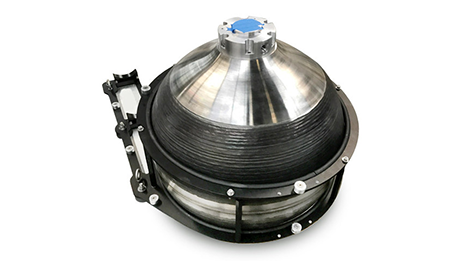
ISE’s Arctic Explorer Autonomous Underwater Vehicle class of vehicles has been used by Canadian authorities to map sea beds
International Submarine Engineering (ISE) has taken large-scale 3D printed part to new depths with its titanium Variable Ballast (VB) tanks, built using Sciaky’s EBAM 3D printing process.
The titanium VB tank is a unique sub-system of ISE’s Arctic Explorer Autonomous Underwater Vehicle (AUV) class of vehicles, enabling it to park on the sea floor or hold itself on the underside of the ice during missions that have previously seen it used by Canadian authorities to map the sea floor underneath the Arctic ice shelf.
After the titanium forging facility that produced propellant tanks for the Russian space program closed, the submersibles company turned to Sciaky having learned that it had 3D printed titanium propellant tanks for Lockheed Martin Space Systems in 2015.

Titanium Variable Ballast (VB) Tank created with Sciaky’s EBAM 3D printing process
The process helped reduce production time from 16 weeks to 8 weeks, as well as reduce overall costs as compared to retooling with a new forging supplier, while passing the same qualification testing as the tank previously created with the forging process.
The VB tank 3D printed with Sciaky’s EBAM process will be installed onboard a new Arctic Explorer AUV that is scheduled to be delivered to the University of Tasmania in the spring of 2017. This new Explorer AUV will be deployed in Antarctica after extensive trials and training operations.
The Arctic Explorer is the largest of the Explorer AUV class, measuring over 7 metres long and weighing over 2,000 kilograms, launching from a ship or through an ice-hole, its modular sections can be separated for transportation.
Rated to 5,000 meters (roughly 3.11 miles) depth, the Arctic Explorer is designed to remain underwater between missions for extended periods of time. A small Remotely Operated Vehicle (ROV) conducts all servicing and charging after the AUV is attached to a docking head.






